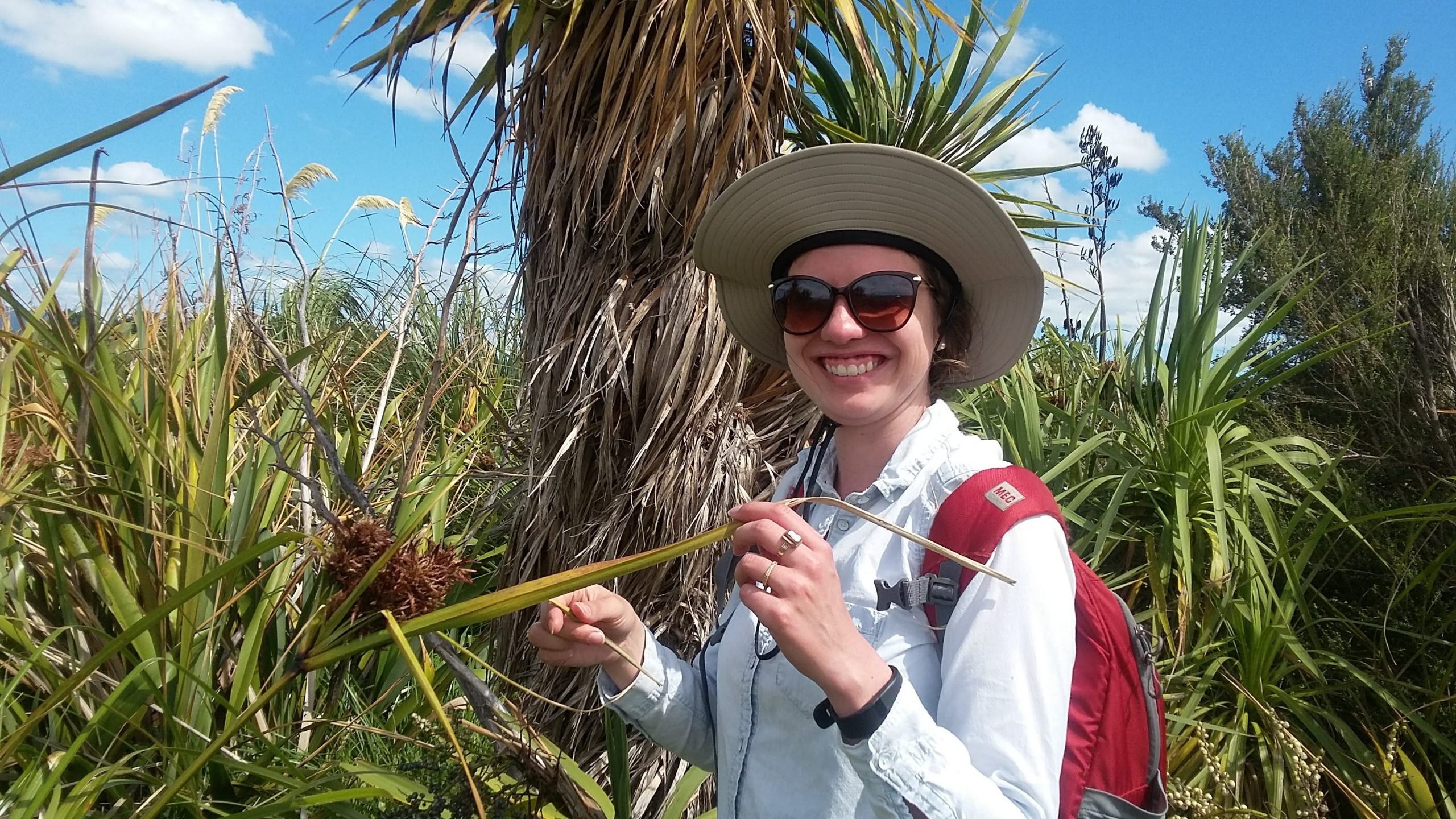20 September 2022

Dr. Stephanie Tomscha
Wetlands are critical ecosystems, providing rich biodiversity, water purification, carbon sequestration, flood abatement, mahinga kai and whatu, and recreation and wellbeing. Aotearoa New Zealand has lost over 90% of its wetlands, and the restoration of some of these wetlands is needed to return these benefits to many parts of the country.
Based from Victoria University of Wellington, Dr. Stephanie Tomscha is part of a team at Bioprotection Aotearoa studying how wetlands might be restored to create resilience to global changes. They have been studying wetlands for more than four years in Wairarapa, a region where wetlands are scarce (only 2% remain), fragmented, small and largely on private property.
Stephanie, a Landscape Ecologist, is using GIS to model where new wetlands should be created in Wairarapa to maximise outcomes for native biodiversity and for local people through better water quality, more access to cultural resources, and better carbon storage.
More specifically, Stephanie’s models are also investigating where wetlands could be restored to protect the critically threatened endemic tree species, swamp maire (Syzygium maire). The species only grows in wetlands and it is culturally important to Māori as kai (it has 18 times the concentration of antioxidants as blueberries) and a natural dye for harakeke.
Like many wetland species, swamp maire declined in range because of the draining and conversion of wetlands to farmland since colonisation. However, prior May 2017 – when the fungal disease myrtle rust (Austropuccinia psidii) arrived in Aotearoa – its conservation status was ‘Not Threatened’. By 2018, its status had changed to ‘Threatened – Nationally Critical’.
Myrtle rust attacks all species in the Myrtaceae family, which is the second most prevalent family of plant species in Aotearoa. Swamp maire is particularly at risk from myrtle rust because of its fine and thin leaves.
Stephanie’s modelling includes climatic conditions such as wind, temperature and humidity, as well as features such as soil moisture and soil type, to identify where refugia for swamp maire should be located to protect it from the incursion of myrtle rust. Research in Australia suggests that valley bottoms that are protected from strong winds may be good refugia from myrtle rust, because the disease is spread by wind. Also, swamp maire only grows on the wettest soils, so it’s important that refugia are located on these soil types.
Landcare Research did similar modelling on swamp maire at a national scale several years ago and found very limited opportunities to protect the species from myrtle rust. However, more recent work suggests that there may be more potential for refugia than this work suggested. In addition, local modelling is needed to ensure the species survives in Wairarapa, as iwi want to be able to access the taonga locally, not just nationwide.
The work that Stephanie is doing for Bioprotection Aotearoa, is part of Project 1.3: Understanding the spatial dynamics of emerging threats to ecosystem health, led by Dr. Julie Deslippe. The group is more generally studying the relationship between plants and microbes, and how they affect the stability of ecosystems in the wake of global change.
The team is highly focused on myrtle species, because their prevalence in Aotearoa means that they are likely to be a large driver of ecosystem change in wetlands here. They will also study how the composition of myrtle species in a wetland affects the ecosystem’s resilience and how wetland species composition will change if myrtle species decline or disappear in the future.
Stephanie and the wider group are involving the community, especially local farmers and iwi, in their research to understand why wetlands are important to them and how this might affect their restoration. They recently published a paper showing that many local farmers are restoring wetlands on private land, because they are well aware of the benefits of wetlands, including water filtration, easier land management, and more.
Stephanie says, “I have been working on wetlands in Wairarapa since 2017, and so I have long-standing relationships with people there. Wetlands are so at risk and do so much for us. We need to look at them holistically to see the benefits and resources they provide. When we have healthy wetlands, what does that provide people and how can that help us protect them?”


